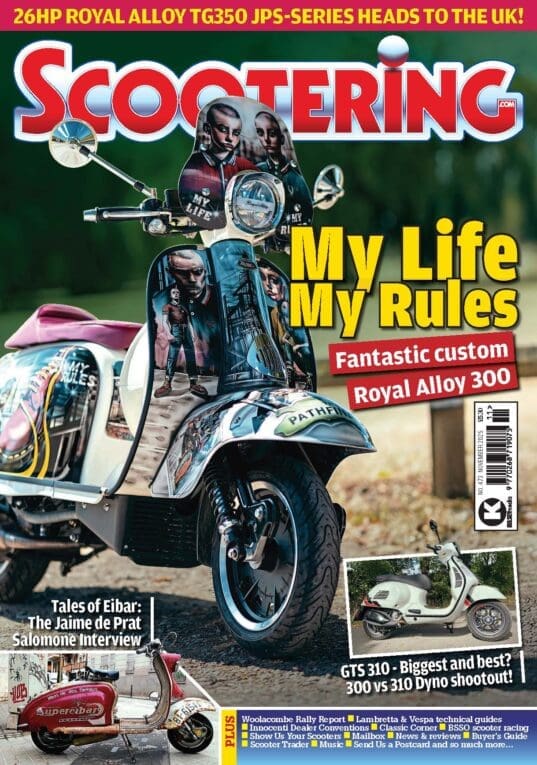A rare and only vaguely documented prototype foldaway Lambretta has resurfaced. Exactly what was Innocenti thinking when it was made?

Recently purchased by leading Lambretta parts manufacturer and collector Tino Sacchi is a rare Innocenti prototype foldaway Lambretta. Originally built in the late 1950s at the factory in Milan it then went on to be owned by a Lambretta dealer in Capri, near Modena. How it got there is a mystery, but during this period a lighting system was fitted to make it roadworthy. At the same time, its green camouflage colour was painted over with a more appealing shade of red. For a short while it was loaned to the Lambretta museum of Vittorio Tessera then went back to Capri, and this is when Tino bought it.
Top secret
The story of its origin is shrouded in mystery and not a great deal of information is known about when and why it was built in the first place. Based around a model D frame the chassis number dates it to around 1956/57. By that time the only real conflict was that of the Suez crisis, but that alone wouldn’t warrant the demand for such a vehicle. Innocenti, like any other automotive companies, always built prototypes and quite often these were very diverse when compared to their main products.
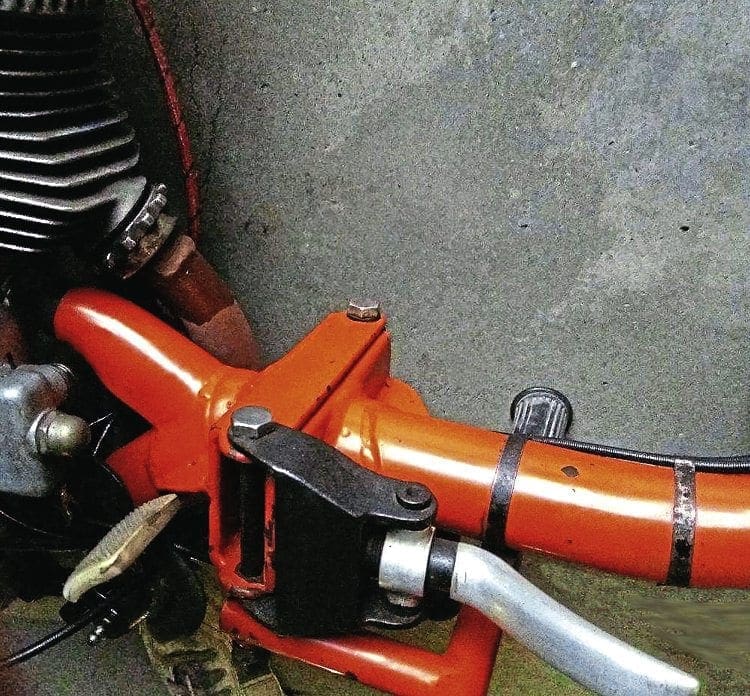
In this case, it must be presumed that the company was exploring the possibility of a lightweight compact military vehicle, similar to others that had been produced in the past. The concept was nothing new, folded in half and stowed in a container to be parachuted out of a plane whereupon it could be immediately used on the ground. There is no evidence of a container ever being built so it must be presumed this is as far as the project ever got.
Revision
The engine has some unique attributes as well as the rest of the machine and there is no doubt it was intended to be used over rough hilly terrain. The exhaust system exits on the left-hand side by means of a large U-bend and crosses over to the right-hand side where the main box section sits above the engine to give maximum clearance. The 125cc cylinder has had revised port timings which give a much wider spread of power which combined with different gear ratios would have made it ideal to climb up hills. The carburetor is only 18mm but combined with a small six-litre tank would make it economical and give it a good range.
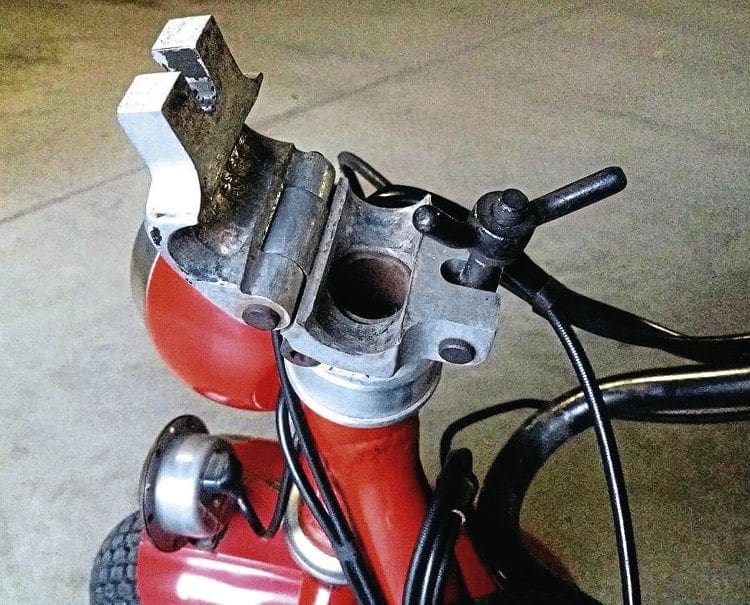
The frame itself though based on a model D is much shorter, obviously to make it more compact for stowing way. There is a quick release clamp in the middle of the tube so the machine can fold in half. Situated just in front of the clamp are the foot pegs for the rider to place their feet on. On the upright of the frame tube is a small storage canister and there is also a large flat storage area just behind the petrol tank at the rear.
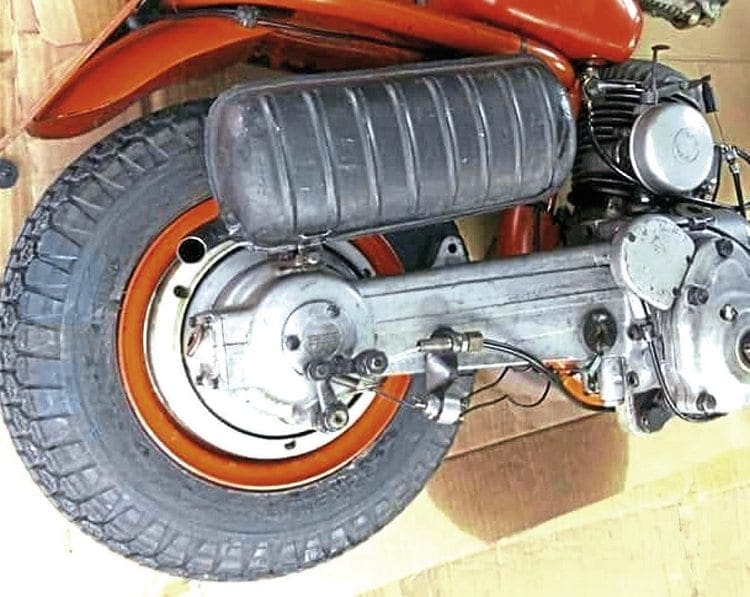
The front end is more intriguing though notably with the design of the forks. Compared to what was being used at the time on the Model D and LD these seem rather more upgraded. More significant is the box type section where the link fits which resembles that of the LI series, but that didn’t come out till 1958. The handlebars are also significantly modified, being much more upswept compared to the normal straight type. These were mounted by the traditional clamp method, but again had a quick release system to stow them away during transport.
Conventional use
Weighing 55 kilos, the whole machine was not the lightest and may be the reason it was or would have been rejected by the military. In saying that, it’s not that heavy and there may have been a more practical day-to-day use for it. In comparison, the Honda Monkey bike was slightly heavier had slightly less power.
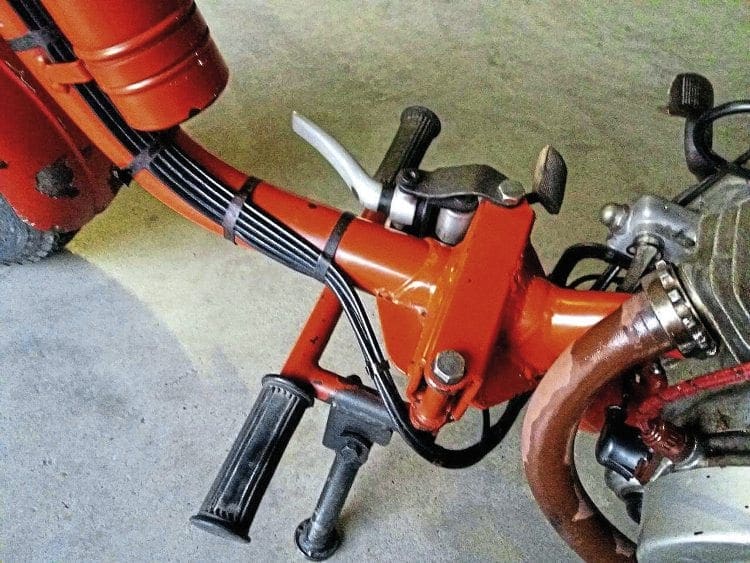
That sold well and when looking at one there are many striking similarities to Innocenti’s prototype. Though this example has been changed in colour and lights added for the road, its appeal would surely have been better suited to one of conventional use rather than one for the military. The problem though at the time of its creation there was no call for this type of machine and it wasn’t until almost a decade later that there was a viable market for it.
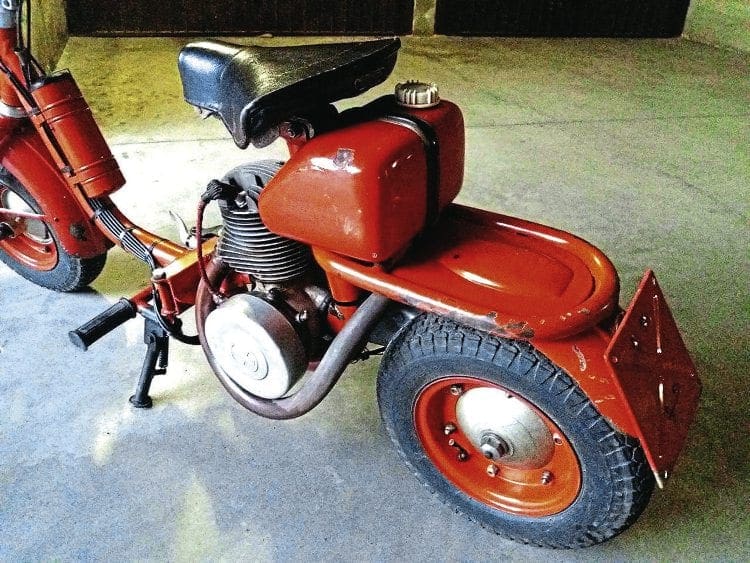
What it did show was Innocenti’s vision to create such good ideas and think beyond the scooters it was producing. Not only was it clever in design but also innovative and ahead of the competition. Looking back at many of the prototypes built at the factory from the motorcycle to the twin cylinder Lambretta it’s such a shame none of them were taken further. This foldaway example just goes to show what the firm was capable of but unfortunately the timing was wrong. One must wonder if there are any other unseen prototypes produced by Innocenti yet to be discovered, you never know.
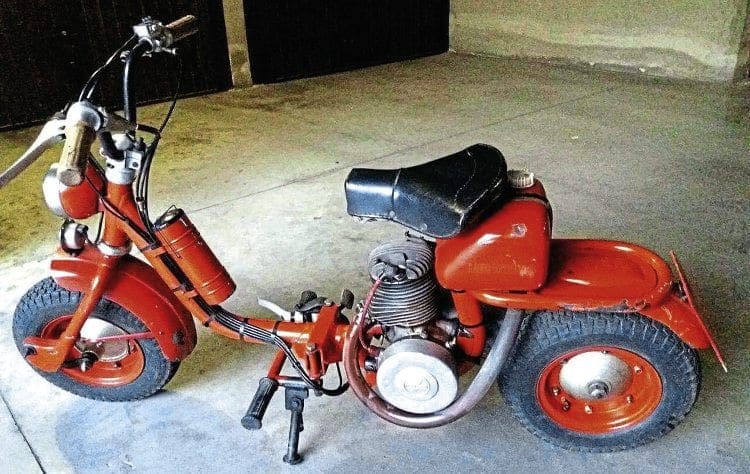
Stu Owen

